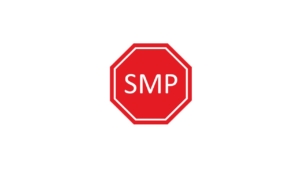ACADEMIC ARTICLES
RESISTANCE TO CHANGE: THE REST OF THE STORY
Published in the Academy of Management Review, 2008 (download pdf)
Prevailing views of resistance to change tell a one-sided story favoring change agents, proposing that resistance is an irrational and dysfunctional reaction, and that it is located only “over there” in the change recipients. We tell the rest of the story by: 1. Proposing that change agents contribute to the occurrence of resistance through their own actions and inactions, including breaking agreements, violating trust, failing to legitimize change, misrepresentation, failing to call for action, and resisting resistance 2. Showing that resistance can actually be useful as a resource for change because it keeps ideas and conversations in existence, engages more people, increases awareness and strengthens the quality of decisions. 3. Offering ways resistance might be restructured by considering resistance as a dynamic among three elements: Recipient action, Agent sense-making, and the Agent-Recipient relationship. Recipient action is the response to a change proposal on the part of the people who are “recipients” of the change, including the people who must make the change and those who will be affected by it. Agent sense-making is the set of interpretations and meanings the change agent attaches to actual or anticipated recipient behavior and communications. The agent-recipient relationship is the set of interactions that creates the context in which the first two elements occur. We discuss the implications of this new view of resistance, including new ideas about what “resistance” really is, and how to “overcome resistance” and make it work to support a change process.
RECONSTRUCTING RESISTANCE: FROM INDIVIDUAL TO RELATIONSHIP
Presented at the 2008 Annual Academy of Management Meetings (download pdf)
THE POSITIVE ROLE OF RESISTANCE IN THE CONDUCT OF CHANGE
Presented at the 2006 Annual Academy of Management Meetings (download pdf)
RESISTANCE AND THE BACKGROUND CONVERSATIONS OF CHANGE
Published in Journal of Organizational Change Management, 2002 (download pdf)
When managers want to win support and “overcome resistance” to change, they usually attempt to influence people’s personal experiences and assessments about the change or the people responsible for it. But resistance is not an objectively existing thing – it is a socially constructed reality in which people are not responding to the change itself as much as they are responding to the background conversations in which the change is being proposed. This paper distinguishes three resistance-giving backgrounds: Complacency, Resignation, Cynicism, and explores the implications of each, including (a) Present-time resistance to past changes; (b) Differences between personal resistance and background resistance; and (c) Ways to change the background conversations that generate resistance. These background conversations create the context for both the change initiative and the responses to it. As a result, resistance is not a personal phenomenon, but a social and systemic one in which resistance is maintained by the background conversations of the organization. Successfully dealing with this source of resistance requires distinguishing the background conversations and completing the past.
POINTS OF VIEW THAT ENGENDER RESISTANCE TO CHANGE
Presented at the 1998 Annual Academy of Management Meetings (download pdf)
PRACTITIONER ARTICLES
STOP BLAMING RESISTANCE TO CHANGE AND START USING IT
Published in Organizational Dynamics, 2010 (download pdf)
Resistance can be a valuable resource in the accomplishment of change. Accessing its benefits, however, requires a shift in managers’ tendency to blame resistance for the failure of change. This may be difficult – blaming resistance for failures in change is easy to do – but there are three reasons to start using that resistance:
- Blaming resistance can be dysfunctional for managers who perceive resistance as threatening. Becoming competitive, defensive, or uncommunicative may alienate potential partners in accomplishing the desired change.
- Blaming other people for their apparent resistance behaviors presumes that resistance is a unilateral phenomenon. It’s not: it is inaccurate and simplistic to view resistance as coming only from ‘‘over there, in them,’’ gives only one side of what must be a two sided story.
- Blaming resistance ignores the functional value of resistance. Such a purely negative view of resistance is not found in other fields of study, e.g., mechanics, biology, and electronics, where resistance is an operational factor. In those fields, resistance is inherently neutral and only takes on a value of ‘‘functional’’ (e.g., in space heaters) or ‘‘dysfunctional’’ (e.g., excessive air drag) depending on what one is trying to accomplish.
A more complete and balanced view of resistance can provide more flexibility in the field of managing change.
DECODING RESISTANCE TO CHANGE
Published in Harvard Business Review, April 2009 (download pdf)
You announce a change initiative. Some employees are silent; others complain. You bristle at this “threat” and determine to squelch the resistance.
But wait: Resistance is a form of feedback from people with deep knowledge about your company’s daily operations. Treat their concerns as valuable information, and you gain important ideas for communicating and executing the change initiative. And you win buy-in essential for success.
Consider: A manager proposed merging the billing group with her call center to create a large customer-service function. Because this required cross-training in both tasks, everyone balked at the extra work. But when she asked them for suggestions for implementing the change, they perked up. One idea—billers and callers training each other—struck gold, and fostered collaboration post-merger.
